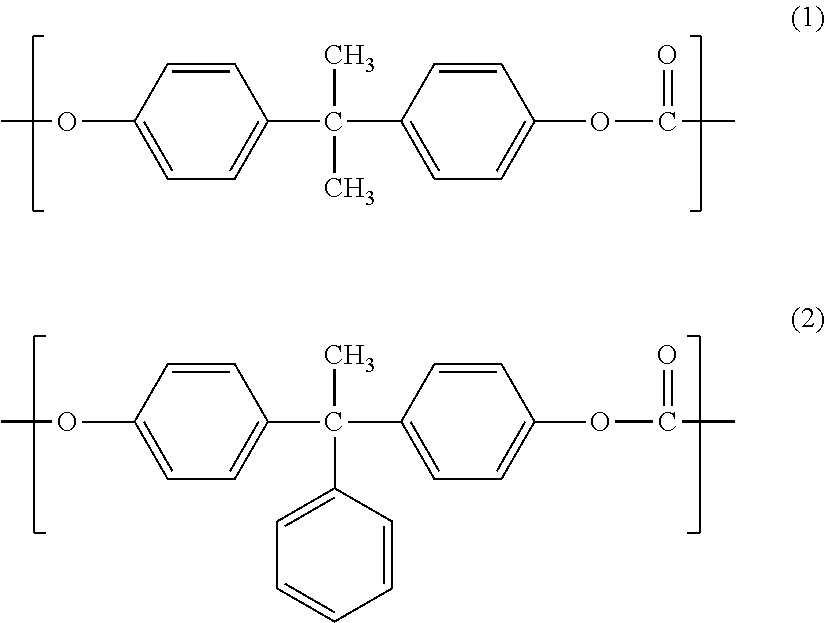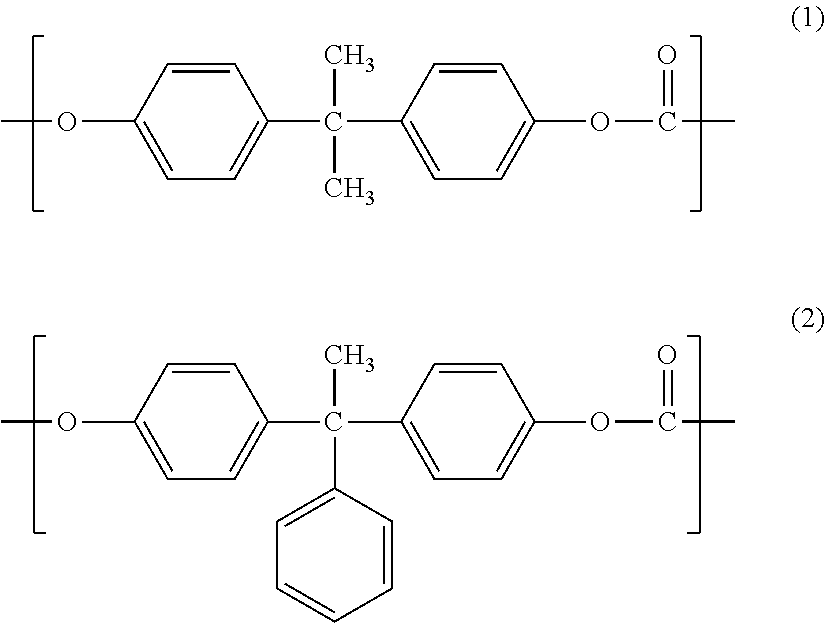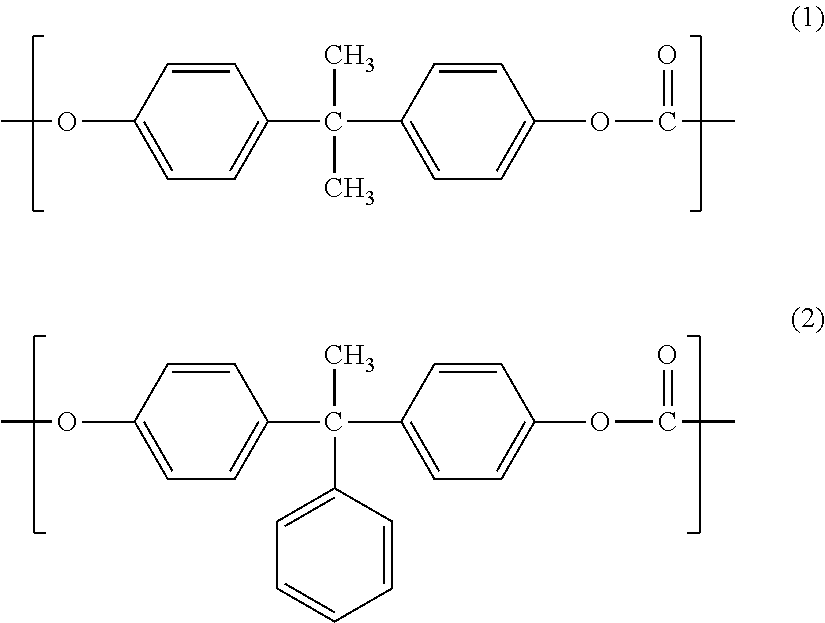Optical use polycarbonate resin composition, method for producing same, and spectacle lens and camera lens containing same
- Summary
- Abstract
- Description
- Claims
- Application Information
AI Technical Summary
Benefits of technology
Problems solved by technology
Method used
Image
Examples
synthesis example 1
[0042]34 L of 8.0% (mass / mass) aqueous solution of sodium hydroxide was put into a 100 L reaction container, and 5.8 kg of BPAP (manufactured by Honshu Chemical Industry Co., Ltd., 20 mol) and 10 g of hydrosulfite were added thereto to be dissolved therein. 22 L of dichloromethane was added thereto, and the mixture was stirred with the temperature being kept at 15° C. while 2.6 kg of phosgene was injected thereinto over 30 minutes.
[0043]After the injection was finished, the mixture was vigorously stirred for 1 minute to emulsify the reaction solution. 100 g of p-tert-butylphenol (hereinafter abbreviated as PTBP, 0.67 mol) was added thereto, and the mixture was further stirred for 10 minutes. After that, 20 ml of triethylamine was added thereto, and the mixture was further stirred for 50 minutes to perform polymerization.
[0044]The polymerization solution was separated into an aqueous phase and an organic phase, and the organic phase was neutralized with phosphoric acid and repeatedly...
synthesis example 2
[0046]Polymerization and purification were carried out in manners similar to those in Synthesis Example 1, except that the amount of PTBP was changed to 140 g (0.93 mol). The intrinsic viscosity of the obtained resin (AP-PC) was 0.355 dL / g. The obtained resin solution was diluted with dichloromethane to adjust its concentration to 10% (mass / mass).
synthesis example 3
[0047]Polymerization and purification were carried out in manners similar to those in Synthesis Example 1, except that the amount of PTBP was changed to 64 g (0.43 mol). The intrinsic viscosity of the obtained resin (AP-PC) was 0.581 dL / g. The obtained resin solution was diluted with dichloromethane to adjust its concentration to 10% (mass / mass). 5 kg of the obtained resin solution was added dropwise to warm water with its temperature being kept at 45° C., and the solvent was evaporated and removed, thereby obtaining a white powdery precipitate. The obtained precipitate was filtered and dried at 120° C. for 24 hours, thereby obtaining a polymer powder.
PUM
| Property | Measurement | Unit |
|---|---|---|
| Temperature | aaaaa | aaaaa |
| Percent by mass | aaaaa | aaaaa |
| Pressure | aaaaa | aaaaa |
Abstract
Description
Claims
Application Information
 Login to View More
Login to View More - R&D
- Intellectual Property
- Life Sciences
- Materials
- Tech Scout
- Unparalleled Data Quality
- Higher Quality Content
- 60% Fewer Hallucinations
Browse by: Latest US Patents, China's latest patents, Technical Efficacy Thesaurus, Application Domain, Technology Topic, Popular Technical Reports.
© 2025 PatSnap. All rights reserved.Legal|Privacy policy|Modern Slavery Act Transparency Statement|Sitemap|About US| Contact US: help@patsnap.com



